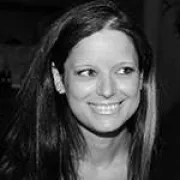As a young woman, a baby-boomer, raised in post-war Japanese society, I struggled-not just against social pressure and prejudice toward women, but also within myself to resist giving into these same pressures.
Ever since its invention back in the 18th century, photography has been documenting life. At the same time, it focuses on inviting audiences to a rather subjective world while trying to be taken seriously as an art form. Photography has always been considered a male-dominated profession, but luckily things are changing. Scholars, writers, bloggers, photography students and enthusiasts have been giving due to the female pioneers of the field. Most of them were always standing and/or hiding in the shadows, oblivious to how much they could acclaim and accomplish. Arguably, the technique, concepts and thematic female photographers use differ from those of a male photographer. At a time when most women were convinced that their place was in the kitchen and certainly not in the darkroom, there were those who were struggling to surpass their male counterparts and work towards gaining respect and recognition for their work.

Kei Orihara (Japanese photographer, 1948-) was born in Shimonoseki and got interested in photography while studying in Tokyo. She started working as a freelance photographer at the age of 29 - concentrating on magazine work, which mostly meant taking portraits of interviewees. Her first solo project was a series of people sitting in Tokyo trains, which was also the theme of Orihara's first solo exhibition in 1977. From 1979 to 1981 the young photographer lived in New York City. Her close friendship with a promising fashion model led to yet another photography exhibition that took place in Japan in 1982. The same photographs were published in a Japanese version of Playbook magazine and then two years later in a book called: "Jana: The New York Girl". For a female photographer to portray a female model like that was both unusual and rather provocative back then - and so were Kei's texts on how similar the two women were. Soon a lot of other exhibitions followed, while Orihara's major work was portrait photography for magazines. In 1999 she published 'Photo Love', a book about life as a photographer, illustrated with photographs. It appeared during something of a boom in photography among young people, but Kei had noted that the concerns of many of the young photographers were private, and she hoped to encourage people to see photography as a tool with which they could relate to other people and to society. Orihara liked mixing it up from time to time; her photographic projects varied from African-American portraits in the Deep South to portraits of young, third-generation Koreans in Japan to portraits of Roman Catholic believers in Sotome. Ultimately, Orihara turned to photographing townscapes; port cities, water towers, etc. She used to run a photoblog of scenes in and near Sunnyside, Queens. Orihara is known for avoiding flash; she prefers using natural and ambient light, even indoors.

Claire Beaugrand Champagne (Canadian photographer, 1948-) has been interested in documentary photography for over 30 years. After obtaining a Bachelor of Arts at the age of 20, she took evening courses in photography at the Marylebone Institute, before finally completing a professional course in photography at CEGEP du Vieux-Montréal. The Canadian photographer was the first female press photographer in Quebec, representative of a generation of photographers who, in the 1970s, made it their mission to explore Quebec's social environment. She is still a major figure within the local community today. Ever since first joining the independent newspaper Le Jour back in 1975, Claire has been keen on remaining faithful to social issues, focusing more on the people around her. Until today, this has been her main subject of reporting. For Claire, photographing contributes to discovering people and helps mark lasting relationships. She always finds a way to convey the emotions of her photographing subjects. She portrays society in a very powerful and humane way. As a socially engaged artist and photographer, Beaugrand Champagne likes reporting stories from all four corners of the world. Her photographs - frequently exhibited around the world - are part of important private and museum collections. Claire has worked for various organizations, magazines and newspapers, and has participated in numerous artistic events, in Quebec and abroad. Her humanist and politically committed work documents Quebec of the past and present. Her black and white portraits have a way of unveiling what weaves together human beings and never fail to arouse emotional responses in those who look at them.

Sometimes it takes courage. It takes courage to go to people, ring the doorbell, talk to them in the street.
We will continue talking about female names that left their mark in photography and about contemporary female photographers who are still to emerge. There are a lot of female photographers out there deserving of praise and we can only hope to cover as many of them as we can. Please, follow this space to find out more.







